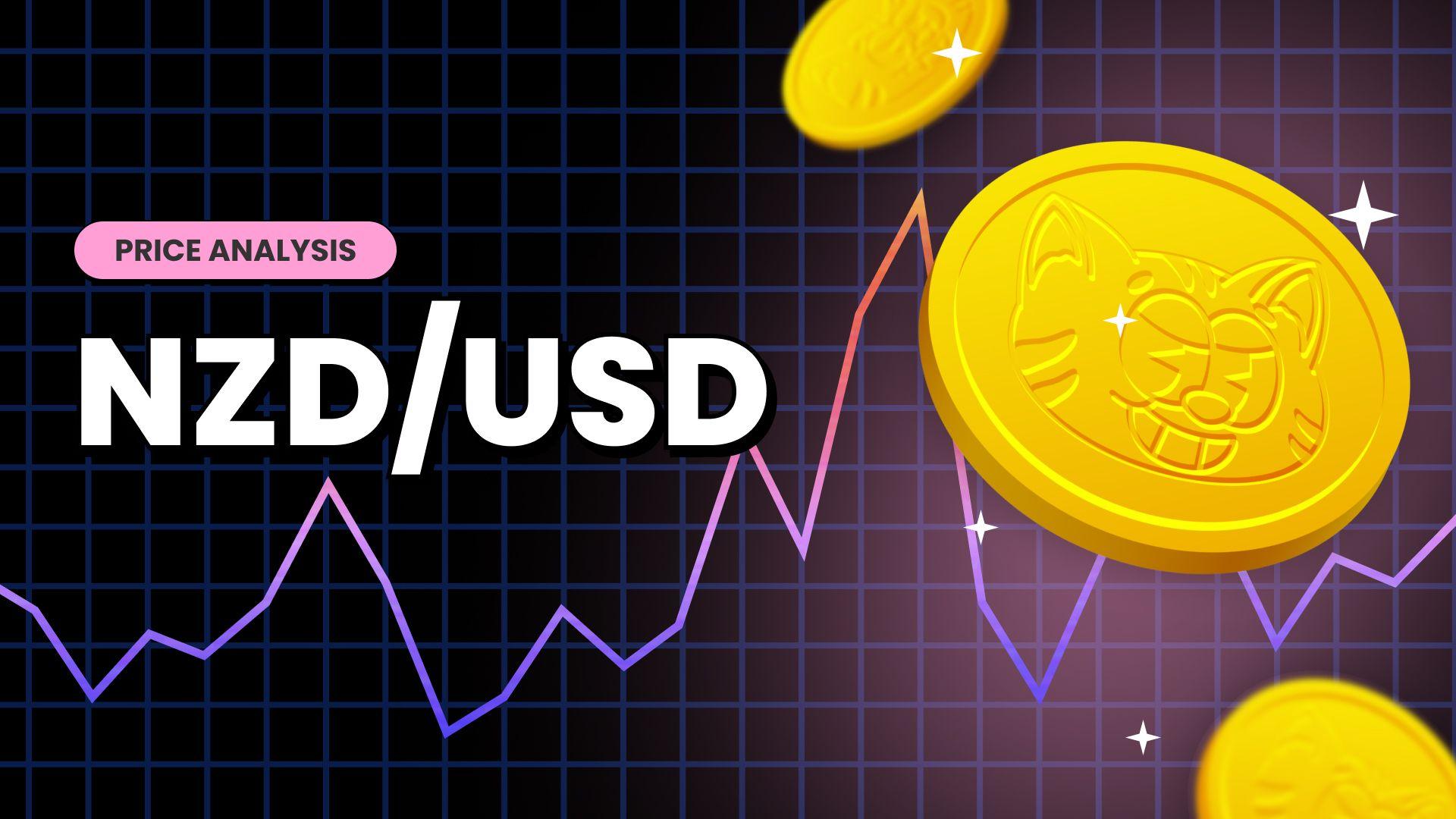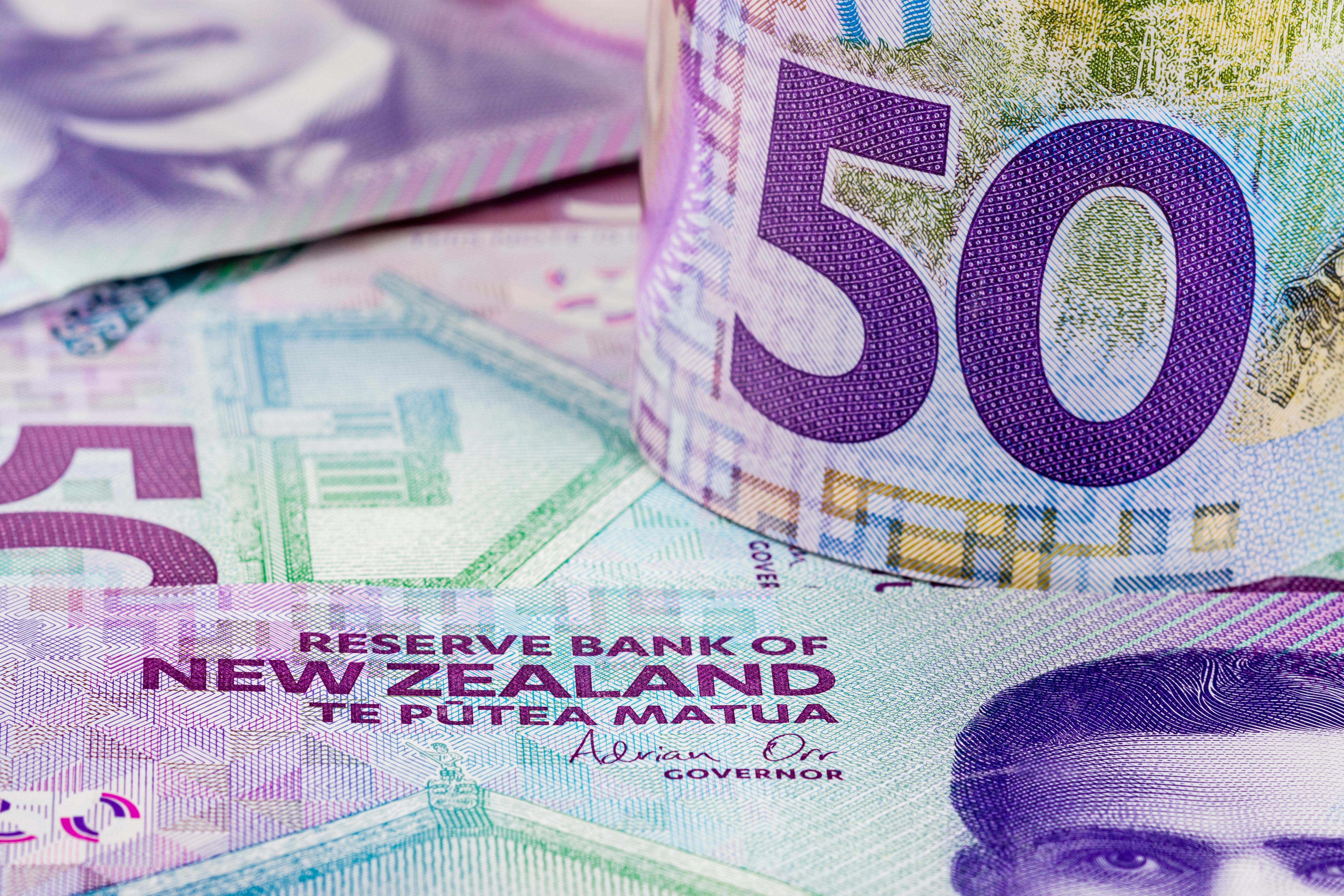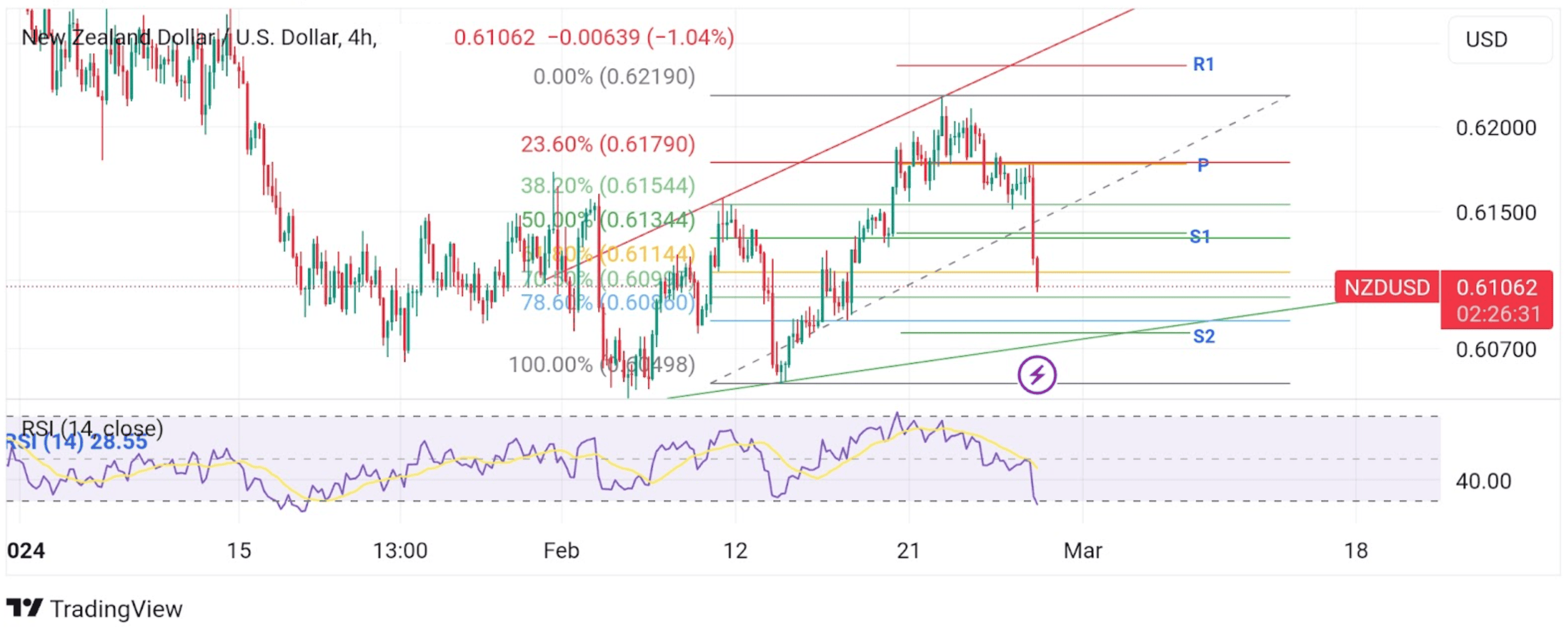NZD/USD Sinks To A Fresh Two-Week Low Below 0.61200 Mark Weighed By Latest RBNZ Decision And A Stronger U.S. Dollar






Key Takeaways:
- The NZD/USD cross slipped to a fresh two-week low on Wednesday during the Asian session, weighed by a combination of adverse factors
- RBNZ's decision to hold rates steady at 5.5% weighs heavily on the Kiwi
- A stronger U.S. dollar supported by hawkish Fed expectations acts as a headwind to the NZD/USD pair
- The market focus shifts toward the release of the 2023 Quarter four GDP report for fresh directional impetus
The NZD/USD pair witnessed aggressive technical selling on Wednesday. During the mid-Asian session, they sank to a fresh two-week low below the 0.61200 mark in reaction to the latest Reserve Bank of New Zealand (RBNZ) monetary policy decision and the goodish bounce in U.S. dollar demand.
The Reserve Bank of New Zealand (RBNZ) announced on Wednesday it had kept its official cash rate (OCR) unchanged at 5.5% during its first policy meeting of the year, extending the rate pause for the fifth consecutive meeting and matching market consensus.
The accompanying monetary policy statement showed the committee viewed that the OCR needs to stay at a restrictive level for some time despite slightly lowering its projection of cash rate peak to 5.6% from earlier estimates of 5.7%. It continued to expect a monetary easing to begin in mid-2025. Regarding the GDP, the board said growth in the near term would be subdued as domestic data were mixed in recent months, with the economic outlook in top trading partner China staying historically weak and global central banks likely retaining their hawkish bias longer than expected to ease persistent cost pressure.

Wednesday's decision was widely expected as headline inflation remains above the central bank's target level of 1 to 3% despite core inflation and inflation expectations falling and the risks to the inflation outlook becoming more balanced.
That said, a goodish pickup in U.S. Treasury bond yields helped revive the U.S. dollar demand and turned out to be another key factor that helped exert downward pressure on the NZD/USD cross.
The U.S. dollar index (DXY), which measures the greenback against a basket of currencies, extended gains for the fifth consecutive session on Wednesday during the Asian session, supported by firm expectations that the Fed will leave rates unchanged during the March and May meetings and start cutting rates during the third quarter of 2024.
The bets were reaffirmed after the latest Fed meeting minutes were released last week on Wednesday, which showed the Fed is concerned about cutting rates too soon, signalling early rate cuts were entirely off the table.
The January FOMC Meeting minutes came days after a U.S. Bureau of Labor Statistics (BLS) report showed consumer and wholesale inflation rose in the U.S. in January, which, when combined with robust U.S. job data and the recent hawkish Fed official's comments, fully debunks the idea of early aggressive rate cuts and supports the view that rates are likely to stay higher for longer.
This, along with the modest bounce in the U.S. equity markets, further supports the greenback and helps pave the way for further selling around the NZD/USD cross.

The downside, however, remains cushioned, at least for the time being, as the U.S. dollar continues to be weighed down by a fresh batch of weak macro data released on Tuesday. The Conference Board Consumer Confidence Index® fell in February to 106.7 (1985=100), down from a revised 110.9 in January.
Additionally, new orders for manufactured durable goods in the United States slumped by 6.1% month-over-month in January 2024, more than market expectations of a 4.5% fall following a 0.3% decrease in December, a U.S. Census Bureau report showed.
Moreover, incoming data today is expected to show the U.S. economy contracted by 3.3% in the fourth quarter of 2023, down from a 4.9% revised figure in the third quarter of 2023.
That said, if the U.S. GDP (QoQ) (Q4) data release matches or comes in weaker-than-market expectations, it will weaken the greenback, which will help limit further losses around the NZD/USD pair.
Going forward, investors look forward to the U.S. docket featuring the release of the U.S. GDP (QoQ) (Q4) data report during the early North American session. This key, significant data release would cause a lot of volatility in the market and, combined with the oversold conditions in the trading chart, warrants caution to traders against submitting aggressive bearish bets.
Technical Outlook: Four-Hour NZD/USD Price Chart

From a technical standpoint, using a four-hour price chart, NZD/USD is trading with a heavy bearish bias below the 0.61200 mark following an extension of the modest bounce from the vicinity of the 0.61777 level touched earlier in the session and the subsequent move below the 61.8% fib level (golden fib) at 0.61144 of the 16th February – 22nd February rally. A further increase in selling pressure from the current price level would pave the way for a drop toward the 0.61000 round mark en route to the 0.60790 level (S2). Sustained weakness below these levels, followed by a bearish price breakout below the upward ascending trendline support extending from the early-February 2024 swing lower-lows, would turn the NZD/USD vulnerable for a fall back toward 0.60300 levels.
On the flip side, if dip-buyers and tactical traders return and catalyze a bullish reversal, initial resistance comes in at the 0.61144 level, which, if cleared decisively, will set the stage for further extension of the bullish reversal. NZD/USD could then rise toward the 0.61374 level, which would act as a barrier against further upticks. However, a clean move above this level would pave the way for further gains, enabling spot prices to rally toward the 0.61777 crucial or pivot level. A subsequent move above this level would reaffirm the bullish bias and pave the way for new buyers to jump in, provoking an extended rally toward the 0.62366 ceilings. In highly bullish cases, NZD/USD could extend a leg toward the 0.63000 round mark.